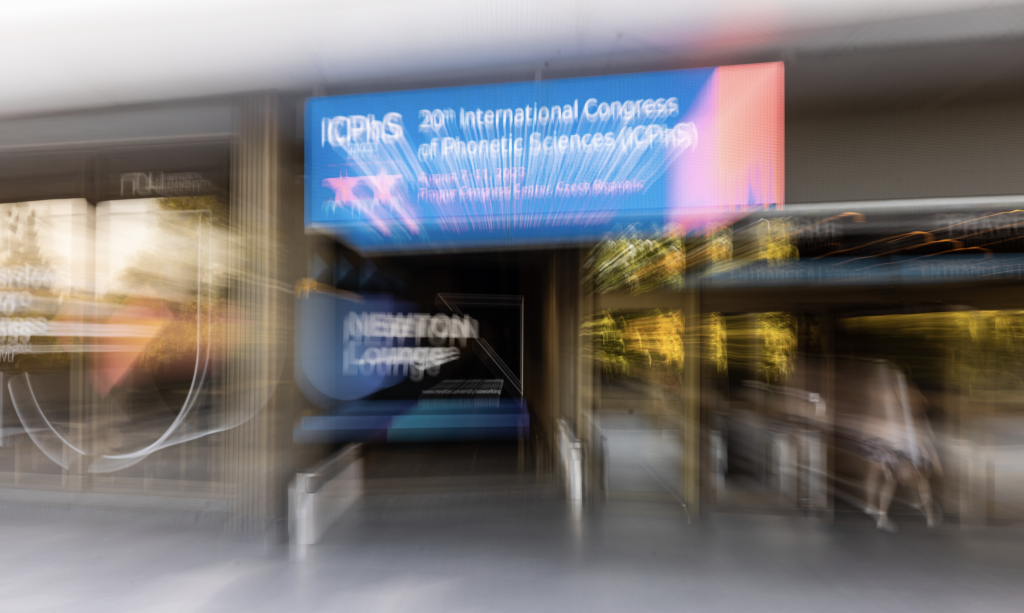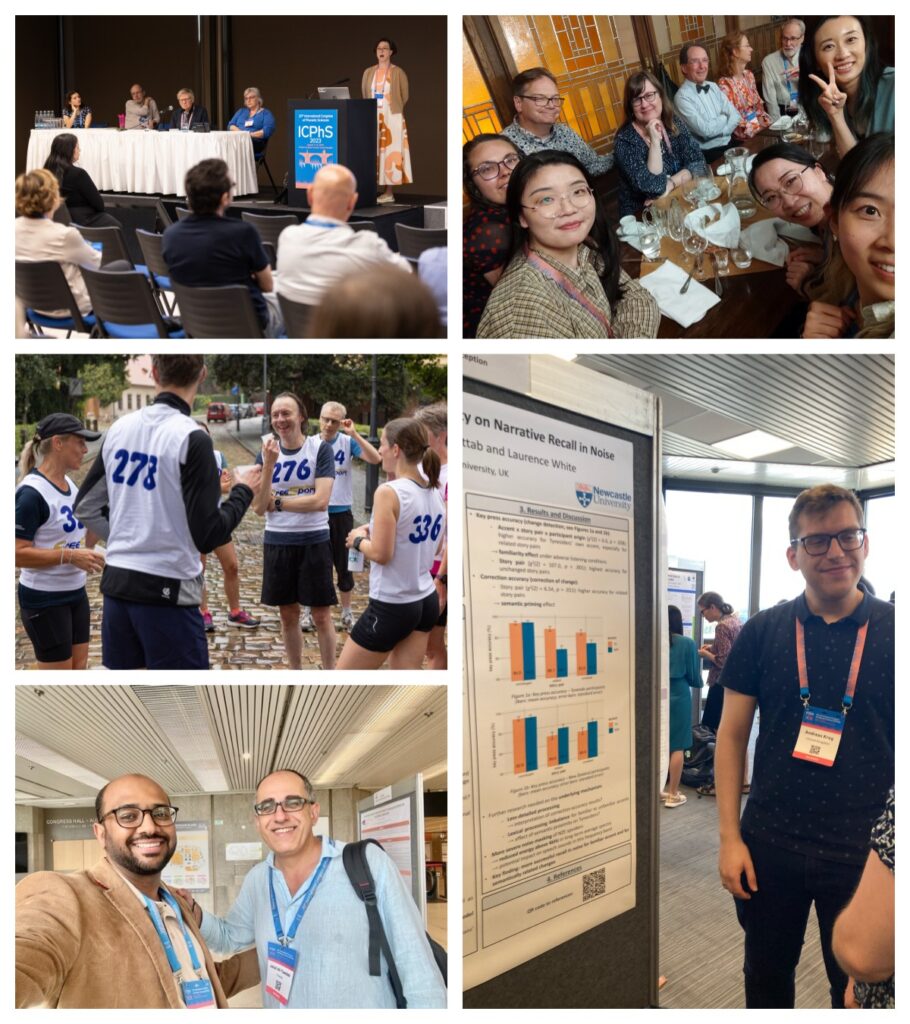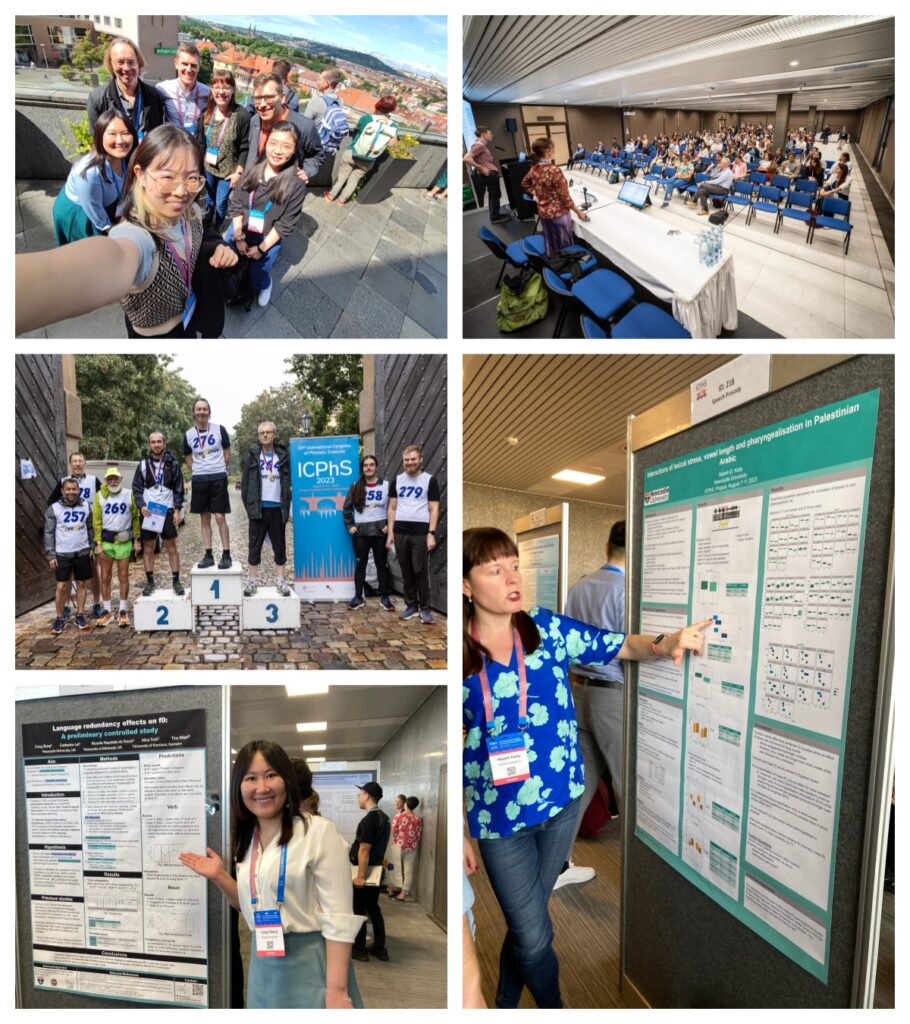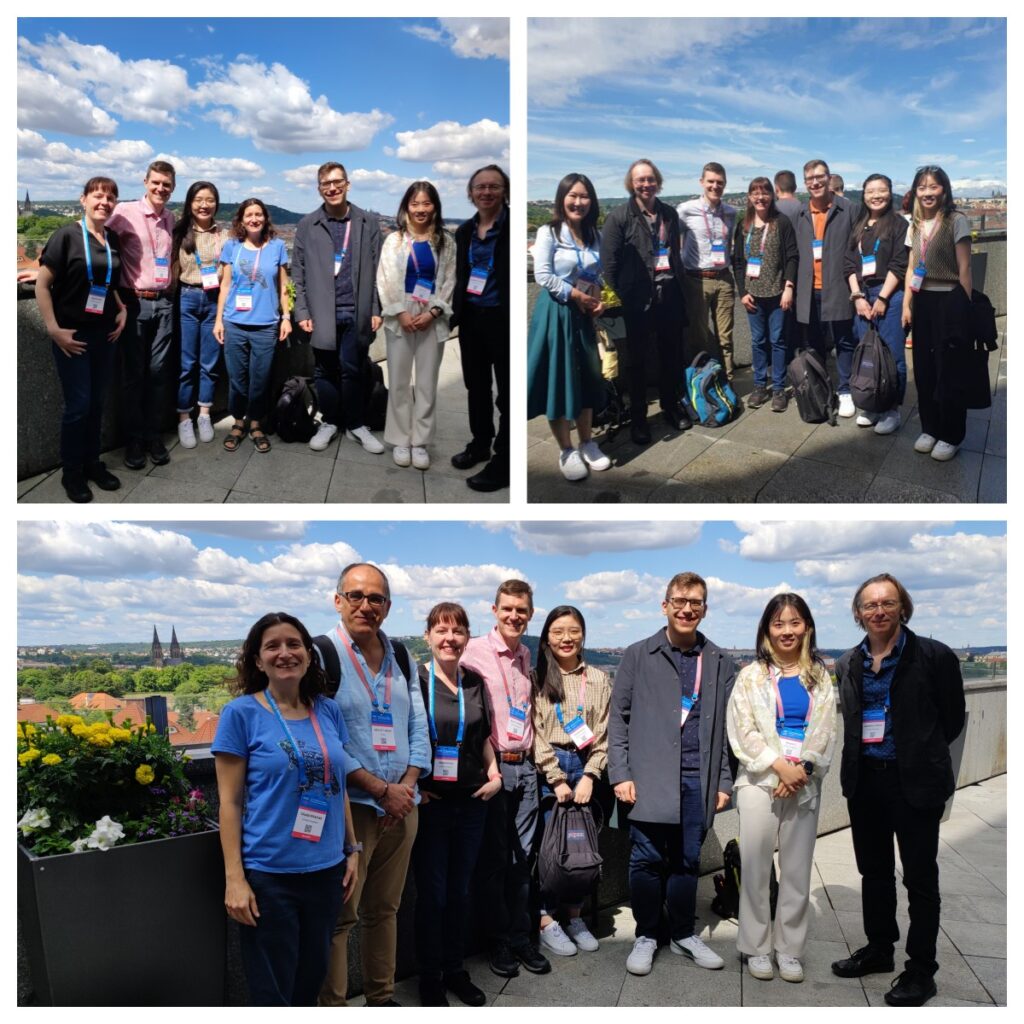
From August 7th to 11th, our research group embarked on an illuminating expedition to the 20th International Congress of the Phonetic Sciences (ICPHS) 2023. As one of the most significant congresses in the field of phonetics, the ICPHS is a pivotal event that only occurs once every four years. We were proud to have nine active participants from our group in attendance. Of these, three members delivered compelling oral presentations, while the rest engaged the academic community through insightful poster presentations.
Within our research group, the conference served as a testament to our unity and collective strength. Every individual contributed to the tapestry of success, and the supportive atmosphere propelled each of us to excel. As questions flowed from the audience, they illuminated the depth of engagement and curiosity that permeated the conference. More details of what we presented in the congress will be provided in the following. This post also aims to encapsulate our experiences, learnings, and the milestones achieved during this prestigious event.
Objectives and Expectations
The overarching theme of ICPHS 2023 was “Intermingling Communities and Changing Cultures,” which deeply resonates with the emerging dynamics of our interconnected world. Over the past few decades, there has been an unprecedented surge in mobility and interpersonal contacts, disrupting the boundaries of national languages and impacting speech patterns universally.
Our primary objective for attending the congress was twofold. Firstly, we aimed to share our own insights and research findings with a broader academic community. We were particularly eager to contribute to the ongoing dialogue about how modern societal shifts are influencing phonetics and phonology. Secondly, we were excited to learn from other leading researchers in the field. We wanted to grasp what constitutes ‘trendy’ research currently and to understand how the academic discourse in this field is changing and evolving.
Moreover, we were keen to explore potential directions for future research and possible collaborative efforts. Given that the congress serves as a melting pot of ideas and innovations, we were optimistic about forging new academic alliances that could pave the way for co-operative ventures in the years to come.
Highlights and Contributions
Oral Presentations
1. Turnbull Rory: Phonological Network Properties of Non-words Influence Their Learnability
Rory’s study underscored the significance of a word’s phonological neighborhood in phonetic processing, extending this concept to non-words. By analyzing participant responses in an experimental setting, this study demonstrated that non-words with more “neighbors” and well-connected neighbors are learned with higher accuracy, indicating that existing lexicon can significantly influence the acquisition of new words.
2. Du Fengting: Rapid Speech Adaptation and Its Persistence Over Time by Non-Standard and Non-Native Listeners
Fengting’s study delved into the intriguing phenomena of how listeners adapt to accented speech, especially when the talkers share the same, similar or different language backgrounds. Through methodical research, the study revealed that both non-standard and non-native English listeners were more adept at perceiving and adapting to accents the same as their own, but not the similar or different one. Notably, this adaptation was not only immediate but also persisted over a 24-hour period, suggesting intriguing implications for language learning and communication.
3. Li Yanyu, Khattab Ghada and White Laurence: Incremental Cue Training: A Study of Lexical Tone Learning by Non-Tonal Listeners
This presentation offered an innovative perspective on how incremental cue training could aid in lexical tone learning for non-tonal language speakers. The findings suggest that employing exaggerated contrasts in pitch movements during the initial stages of training can significantly improve the learners’ ability to discern tonal differences, leading to comparable end-stage performance with conventional training methods.
Poster Presentations
1. Kelly Niamh: Interactions of Lexical Stress, Vowel Length, and Pharyngealisation in Palestinian Arabic
Niamh’s research filled a crucial gap in the understanding of lexical stress in Palestinian Arabic. By analyzing the acoustic correlates of lexical stress, she shed light on the nuanced interactions among stress, phonemic length, and pharyngealization, offering a comprehensive phonetic description of stress patterns in this Arabic variety.
2. Zhang Cong, Lai Catherine, Napoleão de Souza Ricardo, Turk Alice and Bogel Tina: Language Redundancy Effects on Fundamental Frequency (f0): A Preliminary Controlled Study
This study investigated the effects of language redundancy on fundamental frequency (f0), supporting the Smooth Signal Redundancy Hypothesis. Their controlled experiments revealed that language redundancy could indeed affect f0, potentially adding another layer to our understanding of prosodic structure.
3. Dallak Abdulrahman, Khattab Ghada and Al-Tamimi Jalal: Obstruent Voicing and Laryngeal Feature in Arabic
This paper delved into the intricate relationship between voice onset time (VOT) and fundamental frequency (f0) in Jazani Arabic, proposing that f0 perturbation is predictable from VOT patterns. This lends further evidence to the theory of Laryngeal Realism and offers new insights into phonological representation.
4. Krug Andreas, Khattab Ghada and White Laurence: The Effects of Accent Familiarity on Narrative Recall in Noise
This study questioned whether accent familiarity impacts narrative recall, particularly when listeners are exposed to different accents. Findings indicated a ‘familiarity benefit’ in Tyneside listeners, extending the impacts of accentual familiarity on language perception.
Our group’s robust contributions across diverse areas in phonetics and phonology were met with great interest and sparked important academic discussions, marking a significant footprint in the advancements of the field.
Reflection and Future Directions in Phonetics and Phonology
The congress served as an eye-opening experience that showcased the incredible diversity and depth of current research in phonetics and phonology. With hundreds of insightful studies, the event drew a roadmap for the future of these fields. While each study was a piece of a larger puzzle, the six keynote lectures stood out as beacons guiding the way forward.
Technological Advancements and Precision
Research in phonetics and phonology cannot stand alone; it requires the support of powerful tools to quantify sound features and visualize articulatory processes. Over the past few decades, these research tools have continually evolved, and numerous researchers have actively applied state-of-the-art technology in their studies. John Esling’s focus on the larynx as an articulator hinted at the importance of advanced imaging techniques, opening new avenues for understanding language development and linguistic diversity. Similarly, Paul Boersma’s discussion about the future of Praat emphasized how technology will revolutionize phonetic and phonological models. The convergence between these talks suggests a future where technology plays an increasingly central role in refining our analyses and providing greater computational power for simulating the nuances of speech.
Interdisciplinary Synergies
As the landscape of research in phonetics and phonology broadens, the call for multidisciplinary perspectives becomes increasingly urgent. Ravignani Andrea and Stuart-Smith Jane both underscored the importance of multidisciplinary approaches. While Andrea seeks to combine ethology, psychology, neuroscience, and behavioral ecology to explore the origins of vocal rhythmicity, Stuart-Smith envisions a future where sociophonetic and social-articulatory data deepen our understanding of speech patterns related to identity, social class, and dialect. The common thread here is the necessity for interdisciplinary collaboration to answer complex questions that cannot be addressed by any single field alone.
Embracing Social Responsibility
Perhaps the most poignant insights came from talks focusing on the social aspects of research. Titia Benders emphasized the crucial need for expanding child language acquisition research to lesser-studied languages, not only to understand their unique phonological elements but also to develop inclusive research methods. Pavel Trofimovich, on the other hand, urged for a socially responsible approach to second-language speech research, one that balances academic rigor with meaningful social impact. These talks collectively call for a future where research is not just theoretically robust but also socially responsible, reaching communities and languages that have been traditionally underrepresented.
Together, the keynotes painted a vibrant picture of a future that is technologically advanced, inherently interdisciplinary, and deeply rooted in social responsibility. It is clear that the next wave of research in phonetics and phonology will be as diverse and dynamic as the voices that make up human language itself.
Summary
The insights gained from this year’s congress serve as a valuable roadmap for the direction of phonetic and phonological research, areas that are central to the mission of our research group. From the pivotal role of technology in advancing research methodologies to the importance of interdisciplinary collaboration and social responsibility, the keynotes and studies presented offer a multifaceted view of the field’s future. As our group continues to explore new avenues of research, we are invigorated by the wealth of possibilities that these emerging trends present. They not only affirm the work we are currently undertaking but also challenge us to think about how we can contribute to these evolving dialogues in meaningful ways. Thank you for following along with our coverage of the congress, and stay tuned for upcoming research projects that will reflect these dynamic shifts in the field.
More Photos


